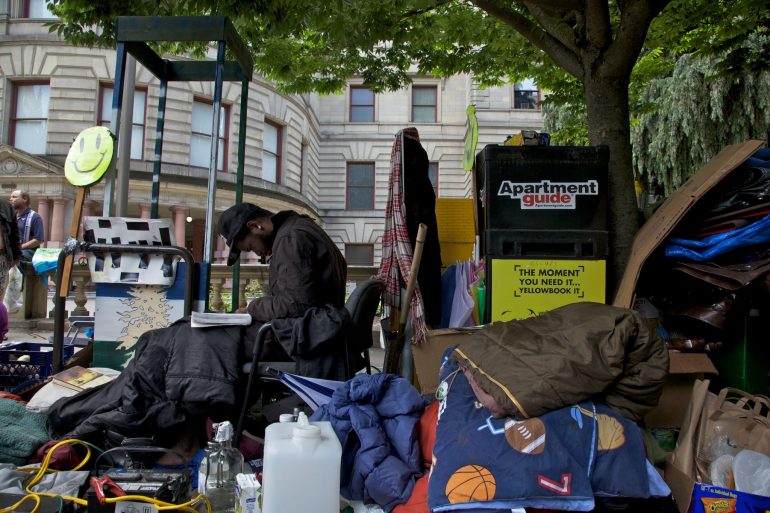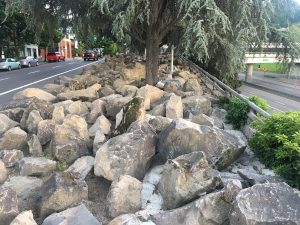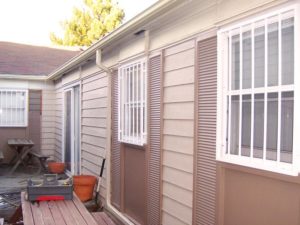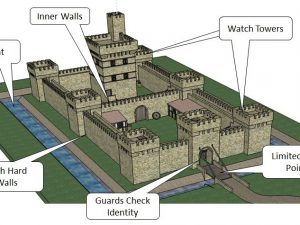
According to the US Department of Housing and Urban Development’s Annual Homeless Assessment Report, as of 2018 there were around 553,000 homeless people in the United States on a given night, or 0.17% of the population. I don’t know how these numbers were arrived at but I suspect the overall number of homeless living on streets, back alleys, parks, parking lots, and the like in the USA is actually much greater. Homelessness is not solely an American problem. Canada and countries in Europe also report growing number of homeless people living “on the streets.”
In my home city of Portland Oregon people living on the streets have become much more visible. Tents have sprung  up adjacent to highways. Crudely constructed shanties constructed of cardboard, tarps, and old wooden pallets can be seen in many open spaces and in some locations, people literally just live and sleep right on the sidewalks.
up adjacent to highways. Crudely constructed shanties constructed of cardboard, tarps, and old wooden pallets can be seen in many open spaces and in some locations, people literally just live and sleep right on the sidewalks.
Every community has their own way of addressing people living on the streets. Some cities use the police to “roust” people camping on the streets. The idea behind this is that if you make it uncomfortable enough for those living on the streets most will move on to some other city that is more accommodating. Here in Portland the emphasis seems to be on accommodating the homeless and letting them camp out just about anywhere.
But even here in the uber-liberal Portland metropolitan area, state and local governments have used environmental and architectural design to “force” homeless people out of certain areas. This type of architecture even has a name – “Hostile Architecture.” Hostile architecture is “an intentional design strategy that uses elements of the built environment to guide or restrict behavior in urban space as a form of crime prevention or order maintenance.”
Boulders – Loud Music – Water Torture – Slanted Benches – Spikes
 A local newspaper reported “As part of a campaign to keep homeless campers off Oregon Department of Transportation property, the state agency has spent more than $1 million since 2013 on “rockscape landscaping”—in the common parlance, boulders—in at least six locations across Portland since 2013.”
A local newspaper reported “As part of a campaign to keep homeless campers off Oregon Department of Transportation property, the state agency has spent more than $1 million since 2013 on “rockscape landscaping”—in the common parlance, boulders—in at least six locations across Portland since 2013.”
The landlord of a 7-11 store in downtown Portland tried playing classical music to combat violence, drug use, theft and harassment caused by “street people” congregating in front of store but found that the music just put them to sleep. The landlord then switched to blasting a high-pitch ringing noise to deter homeless from congregating in near the store. That worked but brought the wrath of City of Portland Code Enforcement and the practice was discontinued. Here is a link to a local news story: https://www.youtube.com/watch?v=ro2VCk3Xnyc

High-pitched sounds and all sorts of music have been used in many cities and countries to make it uncomfortable for people to loiter in certain areas. Rite-Aid stores in California reportedly have blasted Barry Manilow songs outside their premises to deter loiterers.
I also know of one landlord in Portland who used an overhead drip irrigation system to keep the sidewalk wet to deter people from sleeping on the sidewalk in front of his business. Using water to deter homeless is not something new. It has been used for years in many cities. In the UK, for example, an automated sprinkler system was used by one business to make the area “unusable for rough sleepers.” The sprinklers came on in the evening and shut off in the morning. Anyone sleeping there would wake up to find themselves soaking wet. Unlikely they would come back to sleep there again.
In some cities, slanted benches have been used to make it impossible for people to sleep on bus and park benches.  Other cities have used “anti-homeless spikes” to deter people from certain areas. After all, who is going to set up a tent or roll out a sleeping bag over a bed of sharp spikes?
Other cities have used “anti-homeless spikes” to deter people from certain areas. After all, who is going to set up a tent or roll out a sleeping bag over a bed of sharp spikes?
Does “Hostile architecture” work?
Hostile architecture receives a lot of criticism from homeless advocates. Some consider it unethical, ugly, and point out that slanted benches, spikes on the ground and dripping water make it more difficult for people with disabilities to get around. All of these criticisms are likely well founded. Nevertheless, in my physical consulting business, I sometimes recommend Hostile Architecture because it is very effective at doing what it is intended to do – preventing people from sleeping or congregating in certain areas.
Does it do anything to address the causes of homelessness? No, not at all. But those businesses or government entities using Hostile architecture and not trying to “solve” the homeless problem. They just want the homeless to go someplace else and become a problem someplace else. That is a legitimate objective and sometimes that is all that can be accomplished. In that sense, Hostile Architecture is effective and is a viable option for someone who just wants to keep homeless people from loitering or sleeping in a certain defined area.




